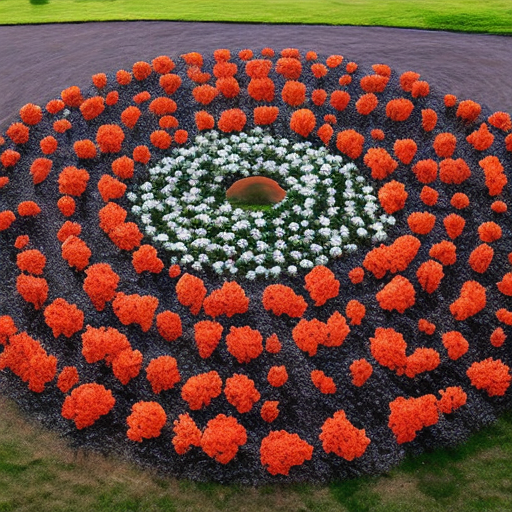Summary: Land art, also known as Earth art or environmental art, is an artistic movement that emerged in the late 1960s and early 1970s. It involves creating art directly in the landscape, using natural materials and the environment as both the medium and the inspiration. Land art often challenges traditional notions of art by blurring the boundaries between art and nature, and by emphasizing the ephemeral and site-specific nature of the work.
Origins and Influences
Land art emerged as a response to the increasing commercialization and commodification of art in the 1960s. Artists sought to break away from the confines of the gallery space and create works that were free from the constraints of the art market. They were also influenced by the growing environmental movement and a desire to reconnect with nature.
Key Artists and Works
One of the pioneers of land art is Robert Smithson, whose most famous work is “Spiral Jetty” (1970). Located in the Great Salt Lake in Utah, this massive earthwork consists of a spiral-shaped jetty made of rocks and earth that extends into the lake. Another significant work is “Double Negative” (1969-1970) by Michael Heizer, which involves cutting two massive trenches into the desert floor in Nevada.
Materials and Techniques
Land artists use a wide range of materials and techniques in their work. They often utilize natural materials such as rocks, soil, water, and plants, as well as industrial materials like concrete and steel. The techniques employed can vary greatly, from simple rearrangements of natural elements to complex earthworks and large-scale sculptural installations.
Concepts and Themes
Land art explores various concepts and themes, including the relationship between humans and the environment, the temporality of art, and the idea of art as a process rather than a finished product. Many land artists also engage with issues of land use, ecology, and sustainability, using their work to raise awareness about environmental concerns.
Challenges and Controversies
Land art presents unique challenges and controversies. One of the main challenges is the temporary and site-specific nature of the works, which often makes them inaccessible to a wider audience. Additionally, land art can sometimes have a negative impact on the environment, raising questions about the ethics of altering natural landscapes for artistic purposes.
Legacy and Influence
Land art has had a lasting impact on the art world, influencing subsequent generations of artists and shaping the development of environmental art and site-specific installation art. It has also inspired a renewed interest in the relationship between art and the natural world, and the potential for art to engage with pressing environmental issues.
In conclusion, land art is a movement that emerged in the late 1960s and early 1970s, characterized by the creation of art directly in the landscape using natural materials and the environment as both the medium and the inspiration. It challenges traditional notions of art, blurring the boundaries between art and nature, and emphasizing the ephemeral and site-specific nature of the work. Land art has had a lasting impact on the art world, influencing subsequent generations of artists and shaping the development of environmental art and site-specific installation art.












